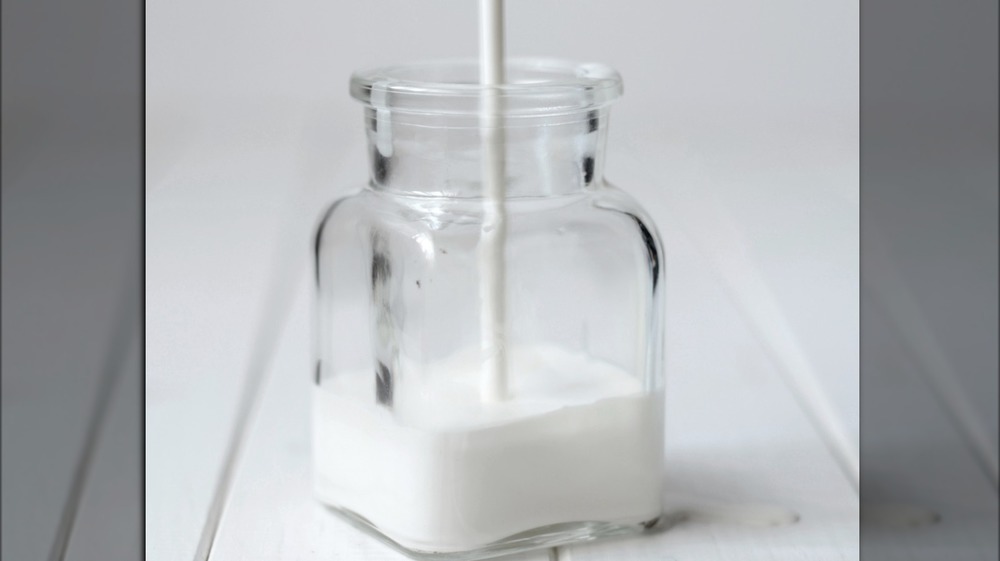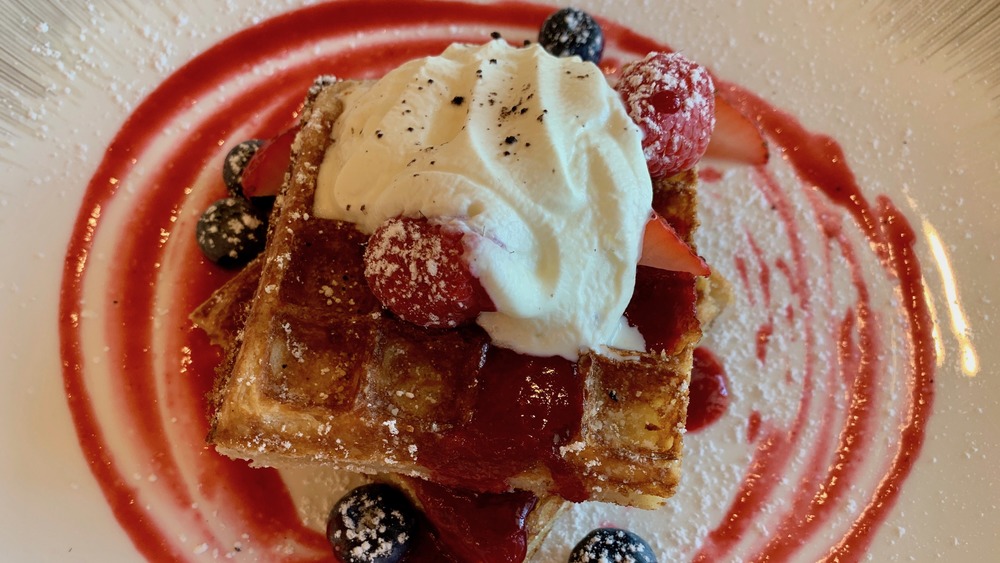Whipping Cream Vs Heavy Cream: What's The Difference?
Who would have thought that the world of cream could be so complicated? Yet here we are. In its purest form, cream is the yellowish, fatty stuff that sits on top of milk before it undergoes a process called homogenization, which breaks down fat molecules and distributes them evenly, making milk look and taste creamier. Before homogenization, people used to shake milk so they could get close to the look and mouthfeel we get today (via US Dairy).
But not all of the fatty stuff on top gets mixed into the milk. What we know of as cream gets skimmed off the top of milk, so the amount of fat in the cream actually determines how well it whips, and how stable the cream might be. The amount of fat in your cream, also known as butterfat, can range from 12 percent, which is what you get in your half and half, to 60 percent for clotted cream, which is what is consumed with hot scones in the UK (via What's Cooking America).
A small fat percentage sets heavy cream apart from whipping cream
Whipping cream and heavy cream both sit in the middle of the butterfat scale, and the FDA has set labeling guidelines so it's easy for manufacturers and consumers to decide which it is they need to get. Whipping cream contains between 30 to 35 percent milkfat, and heavy cream is slightly fattier because it needs to have at least 36 percent milkfat. Cooking Light recommends heavy cream for piping, pastry filling, and topping because it whips better and can hold its shape. Its high fat content also makes heavy cream a better thickening agent for cream sauces and soups.
If you're looking to top a drink or an ice cream sundae with a light cloud of cream, whipping cream is your go-to ingredient. Because it has less fat, whipping cream will deliver a silkier, more airy component. And while that doesn't sound like much of a difference, it matters when you're cooking with creams, since McCormick points out that heavy cream is less likely to curdle or get lumpy than whipping cream.
Cooking Light does suggest that if you're looking to keep cream in the fridge as an all-purpose ingredient for those just-in-case moments, you're better off keeping heavy cream on hand.

